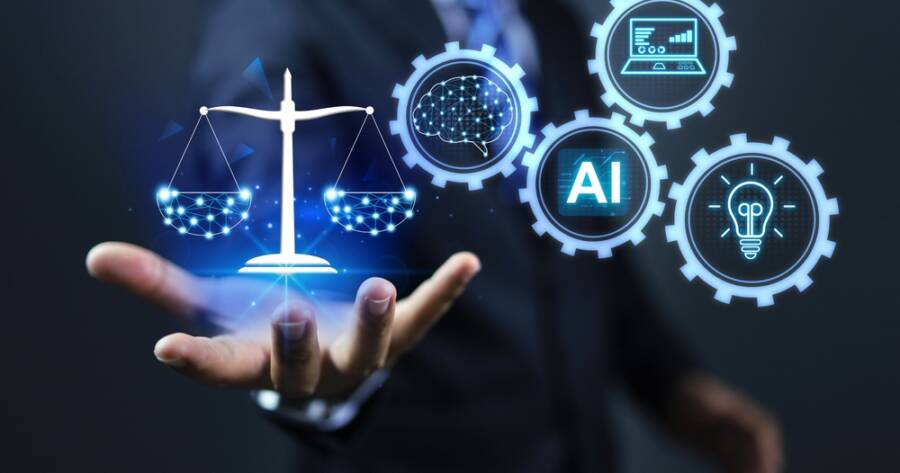The digital age has revolutionized how creative works are shared and consumed, and it’s also introduced new threats to intellectual property. With the rise of generative AI, protecting original content has never been more challenging. Copyright infringement and digital piracy run rampant, leaving creators vulnerable to losing income and control over their work. As technology advances, the battle to safeguard creative ownership becomes increasingly complex. Fortunately, creators can protect their intellectual property with innovative tools.
The Rise of Copyright Infringement Online
Copyright infringement has surged with the widespread accessibility of digital platforms and the rise of generative AI. The ease of sharing, downloading, and even replicating content with AI tools often results in the unauthorized use of creative works. Pirated movies, music, images, and AI-generated imitations spread rapidly across websites, leaving creators vulnerable to significant profit loss. Unfortunately, enforcement of copyright laws remains difficult due to the global nature of the internet, with infringers often hiding behind anonymity and leveraging AI to blur the lines of original ownership.
The Impact of Generative AI on Creative Ownership
Generative AI has significantly impacted the creative industries, as AI systems can now generate text, images, music, and other content autonomously.1 This technology presents unique intellectual property challenges, as AI-generated works may closely resemble existing creations or infringe on copyrighted material. Additionally, questions arise regarding the ownership of AI-generated content — whether it belongs to the creator of the AI, the user of the system, or the AI itself. These unresolved issues highlight the need for updated IP laws that can address the complexities of generative AI.
Digital Rights Management (DRM) and Its Role
Digital Rights Management (DRM) has emerged as a method to help protect digital intellectual property.2 It uses encryption and access control technologies to restrict the unauthorized distribution of digital content. However, DRM isn’t without controversy. While it aims to protect creators, it sometimes limits legitimate users’ access to the products they’ve purchased. The balance between protecting intellectual property and respecting consumers’ rights remains delicate, and DRM solutions continue to evolve in response to this tension.
The NFT Revolution and Intellectual Property
Non-fungible tokens (NFTs) represent a new frontier in the digital ownership of creative works. By using blockchain technology, NFTs offer a unique way to buy and sell digital assets, often allowing creators to retain rights and royalties. Yet, challenges exist in the world of NFTs as well. Copyright issues can arise when an NFT is sold without proper authorization from the original creator. Although NFTs help establish digital ownership, legal protections around them remain uncertain and vary across jurisdictions.
The Global Nature of IP Protection
One of the most significant challenges in protecting intellectual property online is the global nature of the internet. Laws vary from country to country, making it difficult to enforce intellectual property rights consistently. This disparity can leave creators without recourse when their work is misused in countries with lax or non-existent IP laws. Additionally, the costs associated with legal action across multiple jurisdictions can be prohibitively expensive for many creators.
Emerging Technologies and Future Solutions
Emerging technologies may offer new ways to protect intellectual property. Blockchain technology, for instance, has the potential to revolutionize IP protection by providing a transparent and immutable record of ownership. Smart contracts can also automate the enforcement of IP rights, ensuring that creators are compensated for their work without needing traditional legal intervention. However, the legal framework for these technologies is still developing, and widespread adoption is likely years away.
Consult Intellectual Property Lawyers
While having an intellectual property lawyer on retainer isn’t feasible for many creators, hiring one for specific challenges can be crucial. IP lawyers can help navigate complex processes like securing copyrights, trademarks, or patents and offer advice on protecting your work. If you face infringement or unauthorized use of your content, an IP lawyer can guide you through legal actions and help you understand your options. Consulting with an IP lawyer when necessary can ensure you’re equipped to protect your intellectual property at critical moments without needing ongoing legal support.
Stay Informed About Changes in IP Law
The landscape of intellectual property law is constantly evolving, particularly as new technologies emerge. As a creator, it’s essential to stay informed about changes and updates in IP law to ensure you’re adequately protected. Following legal developments, joining professional creator networks, and consulting with IP professionals can help you remain aware of new tools and legal protections. Staying informed empowers you to take the necessary steps to adapt and protect your work in an ever-changing digital environment.
The Future of Intellectual Property Protection
Protecting intellectual property in the digital age presents many challenges, from piracy to navigating a global legal landscape. However, with emerging technologies like NFTs and blockchain as well as Digital Rights Management (DRM) systems, creators have new tools to defend their work. As laws evolve to catch up with technology, safeguarding creative works online will continue to be an ongoing and dynamic process.
